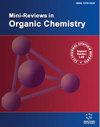关于 C-O 键形成的极具吸引力的全面综述:通过 C-O 交叉偶联反应获得二芳基醚的纳米磁性可回收催化剂
IF 1.9
4区 化学
Q2 CHEMISTRY, ORGANIC
引用次数: 0
摘要
:只需使用外部磁铁就能从反应混合物中简单分离磁性纳米催化剂,这在催化领域,尤其是有机合成领域引发了一场巨大的革命。二芳基醚(含有 Ar-O-Ar 连接的化合物)是最重要和最突出的化合物之一,广泛存在于天然产品、药物和生物分子中。芳基卤化物与芳香醇(尤其是苯酚)的 C-O 交叉偶联或 O 芳基化反应是制备二芳基醚的一种重要而直接的策略。由于二芳基醚在医药、化工和医疗领域的重要性,人们在使用非磁性可重复使用催化剂的基础上,通过芳基卤化物与芳香醇(尤其是苯酚)的 C-O 交叉偶联反应合成二芳基醚方面做出了许多努力。在这篇综述中,我们仔细回顾了二芳基醚的合成方法,并讨论了每种方法的反应条件和产物收率。本文章由计算机程序翻译,如有差异,请以英文原文为准。
An Attractive and Comprehensive Review on C-O Bond Formation: Nanomagnetic Recoverable Catalysts to Access Diaryl Ethers via C-O Cross-coupling Reactions
: The simple separation of magnetic nanocatalysts from the reaction mixture using only an external magnet caused a huge revolution in catalysis, particularly in organic synthesis. Diaryl ethers (compounds containing (Ar-O-Ar linkages) are one of the most important and prominent compounds and are widely found in natural products and pharmaceutical and biological molecules. The C-O cross-coupling or O-arylation reactions of aryl halides with aromatic alcohols, especially phenols, is an important and straightforward strategy for the preparation of diaryl ethers. Due to the high importance of diaryl ethers in the pharmaceutical, chemical and medical fields, many efforts have been made for the synthesis of diaryl ethers through C-O cross-coupling aryl halides with aromatic alcohols, especially phenols based on using non-magnetic reusable catalysts. In this review, we carefully reviewed the synthesis of diaryl ethers and discussed the reaction conditions and product yields in each method.
求助全文
通过发布文献求助,成功后即可免费获取论文全文。
去求助
来源期刊
CiteScore
4.50
自引率
4.30%
发文量
116
审稿时长
>12 weeks
期刊介绍:
Mini-Reviews in Organic Chemistry is a peer reviewed journal which publishes original reviews on all areas of organic chemistry including organic synthesis, bioorganic and medicinal chemistry, natural product chemistry, molecular recognition, and physical organic chemistry. The emphasis will be on publishing quality papers very rapidly, without any charges.
The journal encourages submission of reviews on emerging fields of organic chemistry including:
Bioorganic Chemistry
Carbohydrate Chemistry
Chemical Biology
Chemical Process Research
Computational Organic Chemistry
Development of Synthetic Methodologies
Functional Organic Materials
Heterocyclic Chemistry
Macromolecular Chemistry
Natural Products Isolation And Synthesis
New Synthetic Methodology
Organic Reactions
Organocatalysis
Organometallic Chemistry
Theoretical Organic Chemistry
Polymer Chemistry
Stereochemistry
Structural Investigations
Supramolecular Chemistry

 求助内容:
求助内容: 应助结果提醒方式:
应助结果提醒方式:


